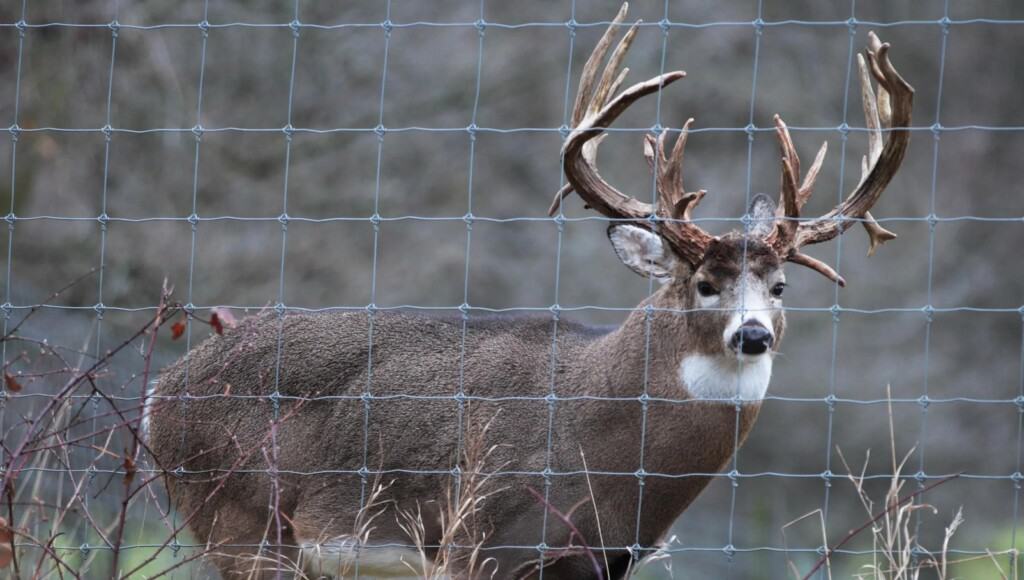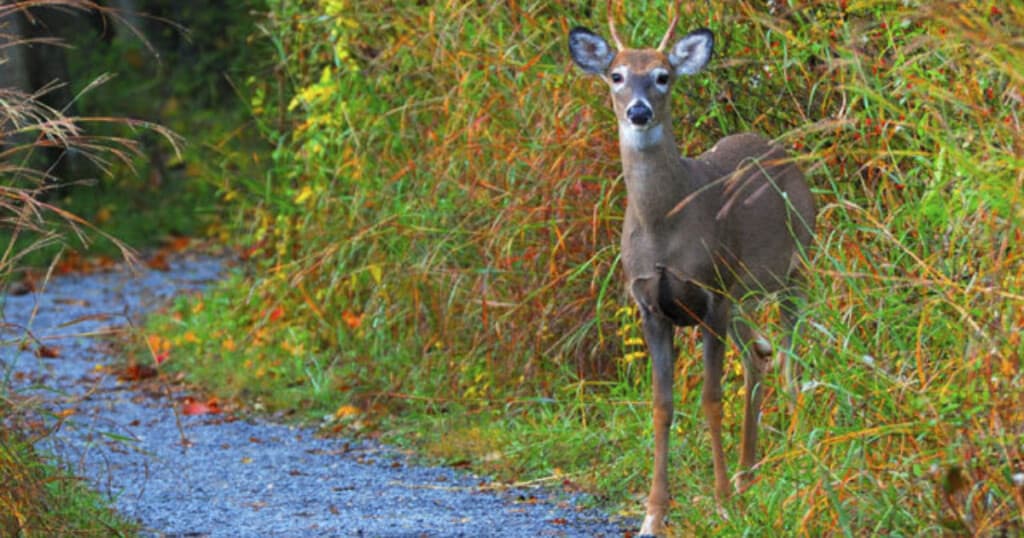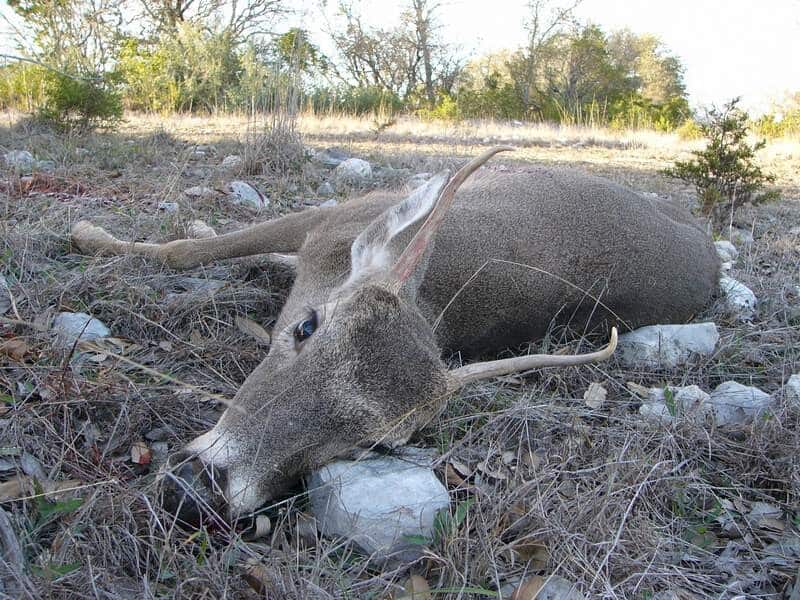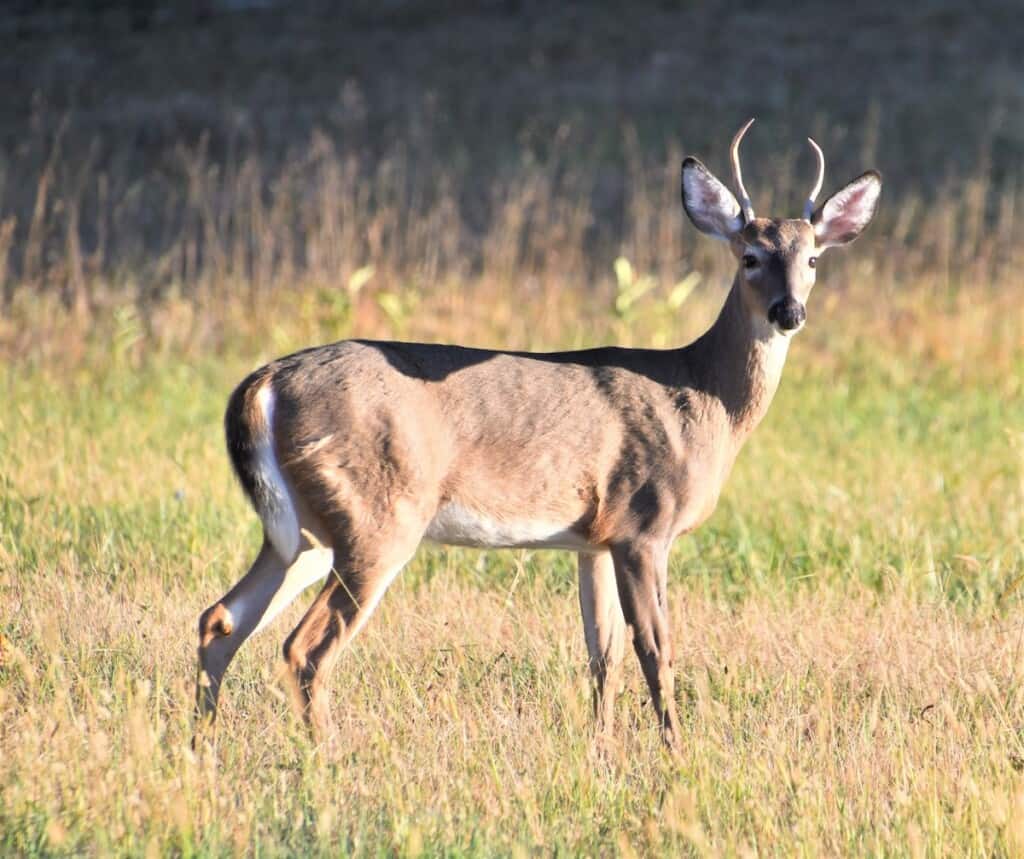If you are trying to manage your deer, there is always a difficult decision to make when a spike steps in front of you. Do you shoot him or not? Well, many people think you should cull a spike buck, but that is not always true. Of course, if you are just deer hunting and not trying to grow the biggest deer possible, shoot that spike if you want. However, it gets a little more complicated if you are trying to improve the deer herd.
In general, shooting a spike will not make the genetics of a wild deer herd considerably better. Unless you are hunting a highly managed farm, shooting spikes and other yearling bucks will only reduce the possible number of more mature bucks in the coming years.
So there are a few things that change the answer to that question, the biggest being what kind of property you are hunting.
Managed Farms vs Casual Property
If you are hunting someones highly managed farm, good luck finding a spike. These farms have fairly good control of their deer herd and are not likely to have many spikes. Although there are multiple reasons for that. If you take any deer and give them proper nutrition and everything else they need, they have a much better chance at growing bigger antlers in their first year.
These managed farms do a good job at giving deer all the resources they would need, so these deer can grow to their maximum potential. If their maximum potential in their first year is a spike, then they will likely be a very small buck throughout their life, so managed farms will take them out.

However, if you are not a full-time ranch manager, shooting a spike may not be beneficial. One of the biggest things you see in the hunting community is hunters saying that everyone should pass younger bucks, and then there would be more mature bucks. While that is true, it is not everyone’s goal.
If that spike makes you excited or happy, shoot it! As long as a deer is legal, and you want to shoot it, go for it. Although if you do not own hundreds of acres and are not managing every aspect of the deer herd in the area, do not claim that spike as a “cull”. If you don’t want sour hunters that haven’t shot anything all year commenting on your Facebook post saying that he needed a few more years, then just don’t post it.
Shooting a yearling spike in a wild and unmanaged herd is not going to improve the genetics. Where I am in Georgia, if you see a decent 6 or 8 point deer you shoot it. It is a good deer. A spike yearling can absolutely turn into a 6 or 8 point deer when it gets to 3 or 4 years old. The problem around here is that they usually never make it past 2.
You can see how leaving this spike and other yearling bucks alone and letting them grow would improve the overall quality of bucks in the years to come. A property full of small 6 or 8 pointers is a lot better than a property full of year-old spikes and 4 pointers.
Although the problem is, if you do not shoot that buck, your neighbor will. That is the biggest problem in Georgia. If it has horns it is liable to die. This is just something you have to consider and be okay with if you want bigger deer in the future.
The only thing is if there were not mature deer there before you hunted the property(because other hunters shot yearlings in neighboring properties) then passing bucks will likely not do any good because they are going to continue to die just as they did before you showed up. So if you want to kill a buck at all, a spike might be the only buck you see this year.

Properly Aging a Deer
If you do want to start properly managing your deer population, you need to be able to properly age a deer in the field. This is generally called aging a deer on the hoof, and it has a lot more to do with the body of the deer rather than his antlers.
The first step to aging a deer is to be able to tell the yearlings apart from the adult deer. Adult bucks are at least 2.5 or 3 years old and will be much bigger than yearlings. Yearling bucks will more or less look like a doe with antlers. They will be slender and do not weigh very much. They still have a lot of developing to do.
When a buck gets to be around 3 years old, its neck and body will be much bigger than a does. During the rut, a buck’s neck swells up and looks huge. This is one tell sign of a mature buck.
Once you get the basics down you are going to have to learn how to tell the difference between a 3-year-old, 4-year-old, and 5 + year old buck. This is more of a skill or estimated guess than an exact science. The key is the body. When the buck’s neck looks so big that you can not tell where the neck starts and body ends, then that is a mature deer.
I have an entire article that goes in-depth about these physical features and even how to age deer by their teeth, you can read it here. I highly recommend getting good at aging deer on the hoof if you want to manage your deer and therefore kill bigger bucks.
The Genetics of One Deer
One time I wrote an article about melanistic whitetail deer or totally black whitetail deer. It was really interesting to see the stats on how many of these deer there were, or how little of them there were rather. After releasing the article, I began to get an unexpected response.
There were a number of hunters that claimed that they would never shoot an all-black deer because it was really neat and they wanted it to breed the does in the area. They were hoping for more melanistic deer.
Sadly, that never happens. If it did, the melanistic deer we never find would have bred a whole subspecies of black deer by now. Whitetail deer as we know them are a 10,000-year-old species. They have had plenty of time to do it if they could.
It turns out that the genetics of a single deer is not enough to change an entire population. Whatever religion you believe in, this is by design. It is mainly a defense against disease.
Otherwise, most of the population would have the genetics of a single dominant organism. Eventually, there would be a single disease that would kill most of the population because their DNA is so similar. So DNA is not passed down super accurately, it is mixed well and the genetics of a single individual is spread fairly thin by the time you get a few generations back.
My point is, that you may think that there is a substantial genetic population of spikes in your area, and you may be correct. Although removing one, or leaving one, is going to have little to no impact on the total genetics as a whole.

Bucks are not the only ones responsible for passing down antler genetics either. Fawns will also get half of their antler genetics from their mothers, which have antler genetics that are impossible to see.
You could very well pass three does with “spike genetics” before you shoot an actual spike. By that logic, you are really just burning one of your tags if your only purpose is trying to fix the genetics.
Sure, you can control the genetics of a whitetail population if they are in a pen. The thing about the wild population is, you have no idea how many there are, or if new deer come from elsewhere. It is impossible to control the genetics of a wild herd by selectively harvesting a handful of small bucks year after year. This will likely do a lot more harm than good.
Spikes vs Bigger Yearlings
There was a study done out in texas that studied a number of captive deer. They were able to conclude a lot of observations from their study, but one of them was that nutrition was definitely a contributing factor to antler growth.
You see, if every single yearling buck is property fed, it is very unlikely they will be spikes. If you see a spike on your property, it is a sign that the deer are not getting the optimal amount of nutrition. Instead of killing off every single spike you see, try to add quality food sources to your property.
There are a number of ways to add food to a property. You can start with making a food plot, it can be hard to find the space for one sometimes, but even micro food plots work well. Next, you can add fruit trees, and care for the existing food sources on the property. I have an entire article about what it takes to properly feed a whitetail population that you can read here.
That study also found that if you did look at a spike yearling, and a larger yearling over the years, the spike buck will produce a smaller rack on average throughout its life compared to a 3 to 6 point yearling.
However, this is direct evidence that the old tale of “once a spike always a spike” is false. This study had spikes and raised them over years and years. Those spikes turned into 6 and 8 pointers, and even respectable bucks when they reached maturity. Sure, they were smaller than the fork-horned yearlings year over year, but they still became respectable deer.

When You Should Shoot a Spike
Cool, so spikes can grow into respectable deer, and should not be automatically culled on wild properties. So when should you shoot a spike? You can do a lot of management to a property without having a huge fence all the way around it.
If you own a sizeable amount of land, you can get a pretty good grip on the local whitetail population. If you are serious about it, you will do a yearly estimate of how many deer you have and try to estimate your buck to doe ratio.
Normally property managers are always trying to figure out how many does they should harvest each year to level out their buck to doe ratio. Although if you find that your buck population is a little bit too big, you may need to shoot some extra bucks.
The natural buck to doe ratio is somewhere around 1 buck to every 3 to 6 does. Most managers try to get it as close to 1 to 1 as possible. Although there is such thing as too many bucks, but it is extremely rare to see that. Either way, if you decide that there are too many bucks on your property (besides your hitlist bucks) that is when you should harvest spike bucks.
The other time you should shoot a spike is if you just want to. If you are not finding mature bucks on your property and you are sick of watching deer pass by you, take a spike.
One thing I will say is that you should be proud of that spike. Do not be embarrassed about it online, if you are worried about sly comments, don’t post it. If a spike is what makes you happy, shoot it. Who cares what anyone else thinks.
A Quick Recap
Spikes will definitely grow bigger racks year over year, and they can become respectable deer if they are allowed to reach maturity. However, spikes have been observed to produce smaller antlers than larger yearling bucks on average.
On a wild and unmanaged property, hunters should not cull spikes. Harvesting a handful of small bucks from a property year after year is likely going to do more harm than good. The genetics of one spike is not going to make a difference in the overall herd, whether they are killed or left alone. Leaving those spikes will produce a population of larger, more mature deer in general on the property in the coming years as long as other hunters around you are not killing everything with antlers.
Lastly, if you are not trying to manage your whitetail population as much as possible, you should shoot a spike if you want to. If you rarely see 3-year-old deer on your property and do not want to go a year without a buck, take whatever legal buck you want. One of the best things about hunting is that there is no wrong way to do it. As long as it is legal and makes you happy, shoot any deer you want to.
Sister Post | How to Attract and Hold Bucks on a Small Property
A sister post is another post that I have written that follows along with the same topic as the one you just read. After reading this article, you will probably like this next one even more! Here is a little teaser…
For any hunter that is interested in habitat management that wants to start growing their very own trophy bucks, it can often be a challenge to have enough property to do so. Obviously, not everyone can afford to buy hundreds of acres of land to start getting into whitetail habitat management…Keep Reading
You Can’t Hold All the Deer All the Time
If you use the strategies I will mention in this article, you will start to attract and hold more deer on your property. Although they will leave quite often, they will also come back. Regardless of what you do, most of the whitetail population will likely…Keep Reading
The Deer Necessities – The Simple Deer Necessities
Another way to provide more food for your whitetail is to enhance the natural food sources. Doing things like…Keep Reading

